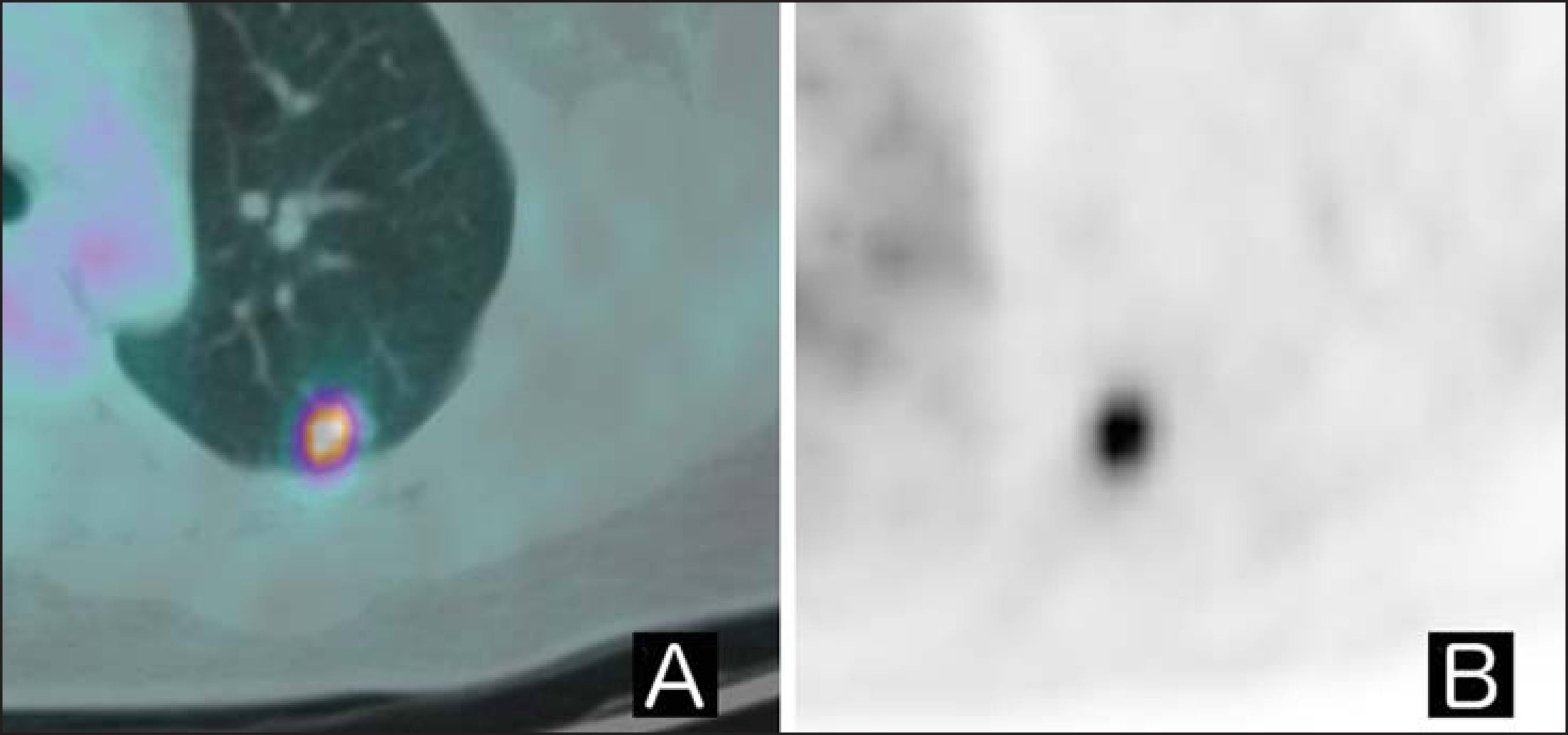Abstract
A solitary pulmonary nodule is a common, often incidental, radiographic finding. The investigation and differential diagnosis of solitary pulmonary nodules remain complex, because there are overlaps between the characteristics of benign and malignant processes. There are currently many strategies for evaluating solitary pulmonary nodules. The main objective is to identify benign lesions, in order to avoid exposing patients to the risks of invasive methods, and to detect cases of lung cancer accurately, in order to avoid delaying potentially curative treatment. The focus of this study was to review the evaluation of solitary pulmonary nodules, to discuss the current role of 18F-fluorodeoxyglucose positron-emission tomography, addressing its accuracy and cost-effectiveness, and to detail the current recommendations for the examination in this scenario.
Keywords:
Solitary pulmonary nodule; Positron-emission tomography



